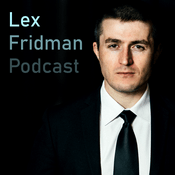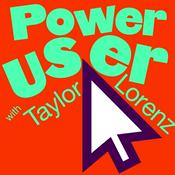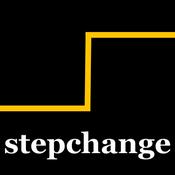429 Episoden

Lost without you: 20 years of finding (losing?) our way with Google Maps
19.12.2025 | 33 Min.
2025 marks 20 years of Google Maps — a tool that many of us would be, quite literally, lost without. We hear from New Orleanians who used Google Maps/Google Earth in its inaugural year to survey the damage to their homes following Hurricane Katrina. We also talk to the internet's Map Men, who ask whether "the best maps humanity has ever produced are simultaneously the worst maps for humanity?" in their new book, "This Way Up: When Maps Go Wrong (And Why It Matters)." *** Survey alert: Tell us what you love about the show, what you want more of; what you could stand a little less of. And if you complete the survey, we'll send you an extra episode (what Ben's calling a "dashboard confessional") in January. Take the survey here: wbur.org/endlessthreadsurvey Thank you!

The drone web: how consumer drones have covered Ukraine's battle lines with fiber optic cable
12.12.2025 | 38 Min.
There's a lot of drone warfare footage on the internet from Ukraine and Russia. But over the last year, a surprising change has emerged, via photos from the battlefront posted online. It has become clear that a huge part of the drone war, from dropping grenades on soldiers in bunkers, to dropping explosives on infrastructure or airfields, is wired. Those wires are fiber optic cable, stretching from drone operators to the drones, which spool out cable across the ground and over trees along the battlefront. These drones are often single-use rarely returning from the mission they set out on. And the spools of fiber optic cable, stretching over 30-50 kilometers, don't get cleaned up. We explore this evolution of drone use in the conflict - where it came from, and why. *** Survey alert: Tell us what you love about the show, what you want more of; what you could stand a little less of. And if you complete the survey, we'll send you an extra episode (what Ben's calling a "dashboard confessional") in January. Take the survey here: wbur.org/endlessthreadsurvey Thank you!

What's on the menu: Ruby Tandoh on how the internet and algorithms shape our appetites
05.12.2025 | 28 Min.
The internet decides what's for dinner. Ruby Tandoh is the author of the new book, All Consuming: Why We Eat the Way We Eat Now. A stint on the Great British Bake Off when she was in college launched her into the world of cookbooks — increasingly irrelevant in a world where we're more likely to turn to Google for a recipe than turn to our bookshelves — and provided her an education in how pop culture stokes our cravings. She takes Ben and Amory on a journey from the surprising history of AllRecipes and the "world's best lasagna," to the TikTok food trends of today. (Spoiler: they don't always taste particularly good.) Show notes: All Consuming: Why We Eat the Way We Eat Now Credits: This episode was produced by Grace Tatter and hosted by Ben Brock Johnson and Amory Sivertson. It was edited by Meg Cramer. Mix and sound design by Emily Jankowski. *** Survey alert: Tell us what you love about the show, what you want more of; what you could stand a little less of. And if you complete the survey, we'll send you an extra episode (what Ben's calling a "dashboard confessional") in January. Take the survey here: wbur.org/endlessthreadsurvey Thank you!

Episodes we love: Sandwiches of History
28.11.2025 | 35 Min.
In honor of the day-after-Thanksgiving leftover sandwich, we're revisiting our conversation with Barry Enderwick, the man behind the beloved and wildly popular "Sandwiches of History" social media accounts. Barry joined Ben and Amory to make a triple-decker sandwich from 1958, and to talk about his first cookbook, "Sandwiches of History the Cookbook: All the Best (and Most Surprising) Things People Have Put Between Slices of Bread." To quote Barry's signature phrase, we think you should give this episode "a GO!" If you're hungry for more, check out Sandwiches of History on Instagram, TikTok, YouTube, and Reddit. *** Survey alert: Tell us what you love about the show, what you want more of; what you could stand a little less of. And if you complete the survey, we'll send you an extra episode (what Ben's calling a "dashboard confessional") in January. Take the survey here: wbur.org/endlessthreadsurvey Thank you!

Chiveman and a mountain of margarine
21.11.2025 | 26 Min.
Endless Thread serves up two of Reddit's most absurd food sagas. First course: Chivegate, in which a Redditor vows to chop a cup of chives daily until the kitchen confidential subreddit declares perfection, only to be accused of fraud. Second course: A Reddit user desperately seeking advice on how to quietly move 13 two-thousand-pound pallets of margarine. Show Notes: u/occasionallyvertical's post on r/UnethicalLifeProTips r/kitchenconfidential This episode was produced and co-hosted by Amory Sivertson and Ben Brock Johnson, and edited by Meg Cramer. Production assistance from Grace Tatter. Mix and sound design by Paul Vaitkus. *** Survey alert: Tell us what you love about the show, what you want more of; what you could stand a little less of. And if you complete the survey, we'll send you an extra episode (what Ben's calling a "dashboard confessional") in January. Take the survey here: wbur.org/endlessthreadsurvey Thank you!
Weitere Technologie Podcasts
Trending Technologie Podcasts
Über Endless Thread
Höre Endless Thread, c't 4004 – der c't-3003-Podcast und viele andere Podcasts aus aller Welt mit der radio.de-App

Hol dir die kostenlose radio.de App
- Sender und Podcasts favorisieren
- Streamen via Wifi oder Bluetooth
- Unterstützt Carplay & Android Auto
- viele weitere App Funktionen
Hol dir die kostenlose radio.de App
- Sender und Podcasts favorisieren
- Streamen via Wifi oder Bluetooth
- Unterstützt Carplay & Android Auto
- viele weitere App Funktionen


Endless Thread
App laden,
loshören.








































